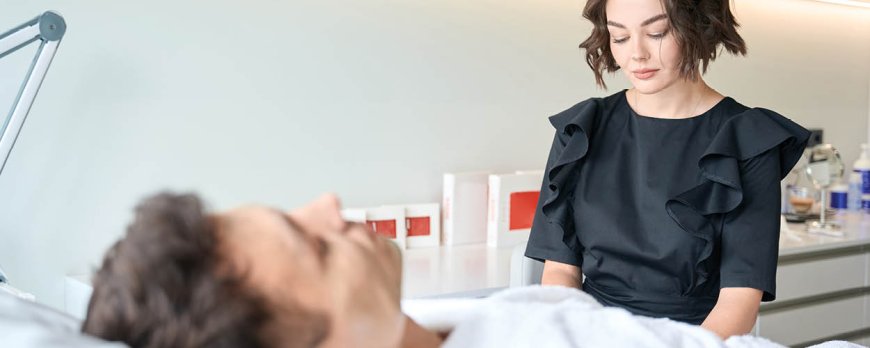What are the 2 main types of acne?
Discover the answer to 'What are the 2 main types of acne?' in our in-depth, informative article. Find cause, prevention, and treatment strategies.
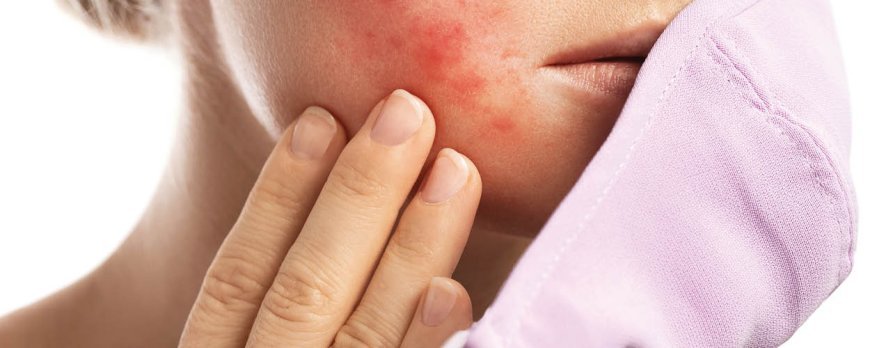
What are the 2 Main Types of Acne?
Acne is a common skin condition that can be categorized into two main types based on its characteristics. Non-inflammatory acne includes blackheads and whiteheads, which are clogged pores that do not cause swelling. Blackheads have open pores and appear as black dots on the skin, while whiteheads have closed pores and result in small bumps with a white tip. Inflammatory acne causes inflammation and swelling and includes papules, pustules, nodules, and cysts. Papules are inflamed red bumps on the skin, while pustules are papules with a white tip or head containing pus. Nodules are larger, painful, and hard-to-touch inflamed lesions that develop deeper within the skin. Cysts are the most severe and painful type of acne, appearing as large, fluid-filled bumps beneath the skin's surface.
Key Takeaways:
- Acne can be categorized into non-inflammatory acne and inflammatory acne.
- Non-inflammatory acne includes blackheads and whiteheads.
- Blackheads have open pores and appear as black dots on the skin.
- Whiteheads have closed pores and result in small bumps with a white tip.
- Inflammatory acne causes inflammation and swelling.
- Papules and pustules are common forms of inflammatory acne.
- Nodules are larger, painful, and deeper within the skin.
- Cysts are the most severe and painful type of acne.
Non-Inflammatory Acne
Non-inflammatory acne refers to types of acne that do not cause swelling or inflammation on the skin. The two main forms of non-inflammatory acne are blackheads and whiteheads. These occur when the pores become clogged with excess oil, dead skin cells, and bacteria.
Blackheads: Blackheads appear as small black dots on the skin. They occur when the pores are open and the clogged material is exposed to air, causing it to oxidize and turn black. Blackheads can be easily identified due to their characteristic appearance.
Whiteheads: Unlike blackheads, whiteheads have closed pores, which prevent the clogged material from coming into contact with air. As a result, they appear as small bumps with a white or flesh-colored tip. Whiteheads are often more difficult to extract or remove compared to blackheads.
Non-inflammatory acne is generally less severe and does not cause as much discomfort as inflammatory acne. However, it can still be frustrating and affect one's self-esteem. Proper skincare, including regular cleansing and exfoliation, can help prevent and manage non-inflammatory acne. It's important to avoid squeezing or picking at blackheads and whiteheads, as this can lead to further irritation or infection.
Blackheads
Blackheads are a type of non-inflammatory acne characterized by clogged pores with open openings, resulting in black dots on the skin. They are a common form of non-inflammatory acne that can appear on the face, chest, back, and other areas of the body. Blackheads are caused by the accumulation of oil, dead skin cells, and bacteria in the pores, which leads to the formation of a plug. The plug oxidizes when it comes in contact with air, giving it a dark or black appearance.
While blackheads are not typically painful or inflamed, they can be cosmetically bothersome and may lead to low self-esteem or embarrassment. They are often seen as the first stage of acne formation and can progress to more severe forms if left untreated.
To prevent and treat blackheads, it is important to maintain a proper skincare routine. This includes regularly washing the face with a gentle cleanser, exfoliating to remove dead skin cells, and using non-comedogenic products that do not clog the pores. It is also helpful to avoid excessive touching or picking at the skin, as this can worsen blackheads and lead to infection or scarring.
If over-the-counter treatments and home remedies do not effectively remove blackheads, it may be necessary to consult a dermatologist. They can provide professional extractions or recommend prescription medications to help clear the skin. With proper care and treatment, blackheads can be managed and minimized, allowing for healthier, clearer skin.
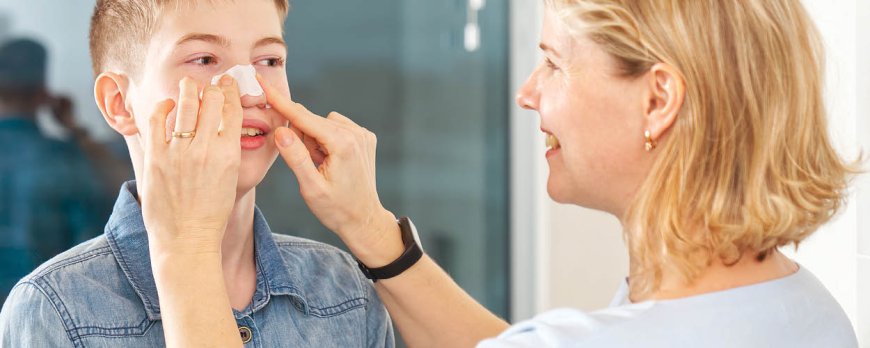
Whiteheads: Understanding Non-Inflammatory Acne
Whiteheads are a common form of non-inflammatory acne that occurs when pores become clogged with debris and sebum. These small bumps, often with a white tip, can be frustrating to deal with, but understanding their causes and how to treat them can help maintain clear skin.
The Causes:
- Excess oil production: When your skin produces too much oil, it can mix with dead skin cells and clog your pores, resulting in whiteheads.
- Bacterial growth: The presence of bacteria on the skin can worsen the clogging process and contribute to the development of whiteheads.
- Hormonal changes: Hormonal fluctuations, particularly during puberty, pregnancy, or menstrual cycles, can increase oil production and make you more prone to whiteheads.
Treatment and Prevention:
- Gentle cleansing: Use a mild cleanser twice a day to remove excess oil, dirt, and bacteria, helping to prevent the formation of whiteheads.
- Non-comedogenic products: Opt for non-comedogenic skincare and makeup products, which are less likely to clog pores.
- Exfoliation: Regular exfoliation can help remove dead skin cells and prevent pore blockages. However, avoid harsh scrubbing, as it can irritate the skin.
- Topical treatments: Over-the-counter creams or gels containing ingredients such as salicylic acid or benzoyl peroxide can help reduce the appearance of whiteheads and prevent new ones from forming.
When to Seek Professional Help:
If your whiteheads persist despite regular skincare and over-the-counter treatments, it may be beneficial to consult a dermatologist. They can evaluate your condition and recommend prescription medications or procedures, such as chemical peels or extractions, to effectively treat your whiteheads.
Inflammatory Acne
Inflammatory acne refers to types of acne that involve inflammation and swelling of the affected skin. This category of acne includes papules, pustules, nodules, and cysts. Each form presents its own characteristics and degree of severity.
Papules and Pustules
Papules are small, inflamed red bumps that appear on the skin. They can be tender to the touch and do not contain any pus. On the other hand, pustules are similar to papules but have a white tip or head, which indicates the presence of pus. Both papules and pustules can be uncomfortable and may cause mild to moderate discomfort.
Nodules
Nodules are larger, deeper within the skin, and more painful than papules and pustules. These inflamed lesions are characterized by their hard-to-touch texture and the level of discomfort they cause. Nodules can persist for weeks and may leave behind scars if not treated promptly and properly.
Cysts
Cysts are the most severe and painful form of inflammatory acne. These large, fluid-filled bumps develop deep beneath the skin's surface and are often accompanied by intense inflammation and swelling. Cysts can cause significant discomfort and may lead to permanent scarring if not managed effectively.
Inflammatory acne requires special attention and appropriate treatment to prevent further complications. It is important to consult with a dermatologist for an accurate diagnosis and personalized treatment plan tailored to your specific condition. Early intervention can help minimize the impact of inflammatory acne and promote healthier skin.
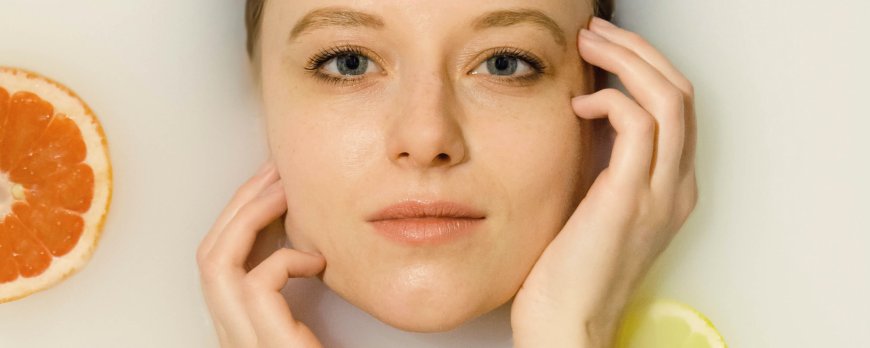
Papules and Pustules
Papules and pustules are types of inflammatory acne characterized by inflamed red bumps on the skin, with pustules having a white tip or head containing pus. These lesions are common and often appear as a result of clogged pores and overactive oil glands. Understanding the characteristics and treatment options for papules and pustules can help manage and prevent further acne breakouts.
Papules:
- Papules are small, raised bumps that can be red or pink in color.
- They are often sensitive to touch and can cause discomfort or pain.
- Papules do not contain pus and should not be squeezed or popped, as this can lead to further inflammation and potential scarring.
- Treatment for papules may involve topical medications containing ingredients like benzoyl peroxide or salicylic acid, which help to reduce inflammation and clear blocked pores.
Pustules:
- Pustules are similar to papules in appearance but contain pus at the center, giving them a white or yellowish head.
- These pimples are often referred to as "whiteheads".
- Pustules can be tender and may be more prone to infection if not treated properly.
- It is important to avoid popping or picking at pustules, as this can lead to scarring and worsen the condition.
- Treatment for pustules may involve topical medications, oral antibiotics, or prescription-strength acne creams that help to reduce inflammation and kill bacteria causing the infection.
It is crucial to consult a dermatologist for proper diagnosis and personalized treatment options. Understanding the characteristics and appropriate care for papules and pustules can help effectively manage and minimize the occurrence of inflammatory acne.
Nodules
Nodules are a type of inflammatory acne that appear as larger, painful, and hard-to-touch lesions that develop deeper within the skin. Unlike papules and pustules, nodules are not filled with pus and can be more challenging to treat. They can be quite uncomfortable and may take longer to heal compared to other forms of acne.
Symptoms of Nodules
- Larger lesions: Nodules are typically larger in size compared to other types of acne. They can vary in diameter and may be more prominent on the skin.
- Painful: Nodules often cause discomfort and pain, especially when pressure is applied to the affected area.
- Hard-to-touch: Due to their deeper location within the skin, nodules may feel firm and hard when touched.
- Inflammation: Nodules are characterized by inflammation, which can cause redness and swelling around the affected area.
It is important to seek professional help when dealing with nodules, as they can lead to scarring and may require specialized treatment. Dermatologists can provide effective solutions to manage and minimize the impact of nodular acne.
Remember, everyone's skin is unique, and what works for one person may not work for another. Consulting with a dermatologist can help determine the best course of action for your specific situation and provide personalized treatment options to address nodules and other forms of inflammatory acne effectively.
Cysts: The Most Severe Form of Inflammatory Acne
Cysts are the most severe form of inflammatory acne, characterized by large, fluid-filled bumps that develop beneath the surface of the skin. These painful lesions can be deeply embedded, causing discomfort and affecting one's self-esteem. Understanding cystic acne is crucial for effective management and treatment.
Cysts are often the result of blocked pores that become infected by bacteria, leading to inflammation. Unlike other forms of acne, cysts go beyond the surface of the skin, forming deep within the dermis. The accumulation of sebum and dead skin cells creates a perfect environment for bacteria to thrive, causing the development of these large and painful bumps.
Identifying cystic acne is relatively straightforward. These fluid-filled bumps are often larger than other acne lesions and can be felt beneath the skin's surface. The area surrounding the cyst is typically red, swollen, and tender to the touch. If left untreated, cysts can lead to scarring.
While treating cystic acne can be challenging, there are strategies available. It is crucial to consult a dermatologist who can provide tailored treatment options. These may include prescription medications, such as oral antibiotics or isotretinoin, to reduce inflammation and target bacteria. In some cases, your dermatologist may recommend a combination of treatments, such as topical creams or gels, along with lifestyle changes to manage factors that can worsen acne.
Key Points:
- Cysts are the most severe form of inflammatory acne, characterized by large, fluid-filled bumps beneath the skin's surface.
- Cysts are caused by blocked pores that become infected by bacteria, leading to inflammation.
- Treatment for cystic acne should be sought from a dermatologist who can provide personalized options, including prescription medications.
- Early intervention is crucial to prevent scarring and manage the discomfort associated with cystic acne.
By understanding cystic acne and seeking appropriate treatment, individuals can effectively manage this severe form of inflammatory acne and improve their skin health and overall well-being.
Causes, Prevention, and Treatment
Understanding the causes of acne and adopting effective prevention and treatment strategies can help manage and reduce its occurrence. Here are some key factors that contribute to acne development:
- Hormonal changes: Hormonal fluctuations, particularly during puberty, can stimulate the production of sebum, an oily substance that can clog pores and lead to acne.
- Excessive sebum production: Sebum production can be influenced by genetics, stress, and certain medications, contributing to acne formation.
- Clogged pores: When dead skin cells, bacteria, and sebum accumulate in the pores, they can become clogged and result in the formation of blackheads, whiteheads, and other forms of acne.
- Bacterial infection: Propionibacterium acnes, a type of bacteria that naturally resides on the skin, can multiply in the clogged pores and cause inflammation, leading to the development of inflammatory acne.
- Diet and lifestyle factors: A diet high in refined carbohydrates, dairy products, and saturated fats, as well as excessive stress, inadequate sleep, and smoking, may worsen acne symptoms.
To prevent and manage acne, it is important to adopt the following strategies:
- Maintain a consistent skincare routine: Cleanse the skin gently twice a day, avoiding harsh cleansers that can strip away natural oils. Use non-comedogenic products and avoid excessive scrubbing or picking at the skin.
- Keep the skin hydrated: Use a non-comedogenic moisturizer to prevent excessive dryness, which can trigger increased sebum production.
- Avoid touching the face: Touching the face can transfer bacteria and irritants to the skin, exacerbating acne symptoms. Keep hands away from the face and avoid popping or squeezing pimples.
- Practice good dietary habits: Consume a balanced diet rich in fruits, vegetables, whole grains, and lean protein. Limit the intake of sugary, greasy, and processed foods.
- Manage stress: Stress can worsen acne symptoms. Engage in stress-reducing activities such as exercise, meditation, and hobbies to help maintain healthy skin.
Treatment options
When acne persists despite preventive measures, various treatment options are available:
- Topical treatments: Over-the-counter creams, gels, and lotions containing ingredients such as benzoyl peroxide, salicylic acid, or retinoids can help unclog pores and reduce inflammation.
- Prescription medications: If over-the-counter treatments are not effective, a dermatologist may prescribe stronger topical medications or oral antibiotics to combat acne-causing bacteria and reduce inflammation.
- Other therapies: In severe cases, dermatologists may recommend procedures such as chemical peels, laser therapy, or corticosteroid injections to improve acne symptoms.
It is important to consult a dermatologist to determine the most appropriate treatment plan based on the severity and type of acne.
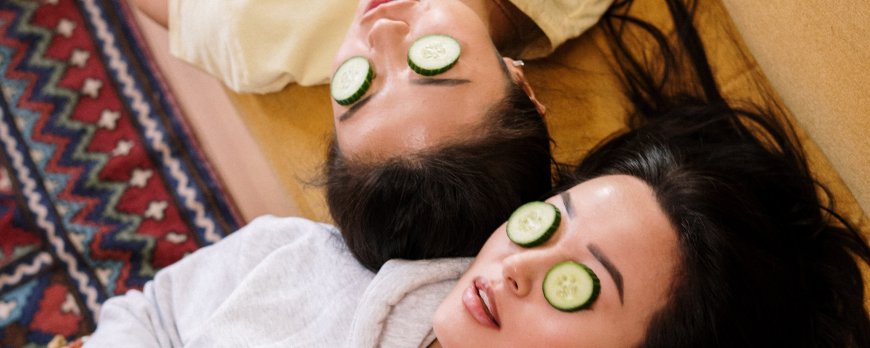
Conclusion
In conclusion, acne can be categorized into two main types: non-inflammatory acne and inflammatory acne. Non-inflammatory acne includes blackheads and whiteheads, which are clogged pores that do not cause swelling. Blackheads have open pores and appear as black dots on the skin, while whiteheads have closed pores and result in small bumps with a white tip.
Inflammatory acne causes inflammation and swelling and includes papules, pustules, nodules, and cysts. Papules are inflamed red bumps on the skin, while pustules are papules with a white tip or head containing pus. Nodules are larger, painful, and hard-to-touch inflamed lesions that develop deeper within the skin. Cysts are the most severe and painful type of acne, appearing as large, fluid-filled bumps beneath the skin's surface.
Understanding the different types of acne is crucial for effective treatment and prevention. Non-inflammatory acne can often be managed with proper skincare and regular exfoliation to prevent clogged pores. Inflammatory acne may require more targeted treatment, such as topical or oral medications prescribed by a dermatologist.
If you are struggling with acne, it is important to consult with a healthcare professional or dermatologist to determine the best course of action for your specific case. They can provide personalized recommendations and guidance to help you achieve clearer and healthier skin.
FAQ
What are the 2 main types of acne?
The two main types of acne are non-inflammatory acne and inflammatory acne.
What is non-inflammatory acne?
Non-inflammatory acne includes blackheads and whiteheads, which are clogged pores that do not cause swelling.
What are blackheads?
Blackheads have open pores and appear as black dots on the skin.
What are whiteheads?
Whiteheads have closed pores and result in small bumps with a white tip.
What is inflammatory acne?
Inflammatory acne causes inflammation and swelling and includes papules, pustules, nodules, and cysts.
What are papules and pustules?
Papules are inflamed red bumps on the skin, while pustules are papules with a white tip or head containing pus.
What are nodules?
Nodules are larger, painful, and hard-to-touch inflamed lesions that develop deeper within the skin.
What are cysts?
Cysts are the most severe and painful type of acne, appearing as large, fluid-filled bumps beneath the skin's surface.
What are the causes, prevention, and treatment for acne?
The causes, prevention, and treatment strategies for acne vary and can include lifestyle changes, skincare routines, medication, and professional treatments. It is best to consult with a dermatologist for personalized advice.
